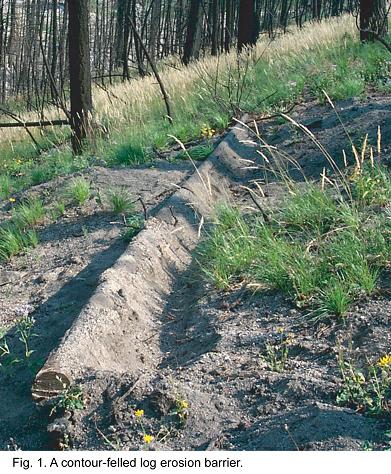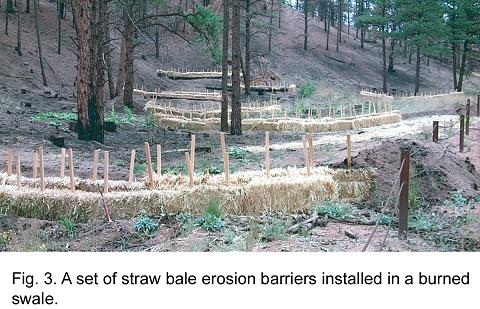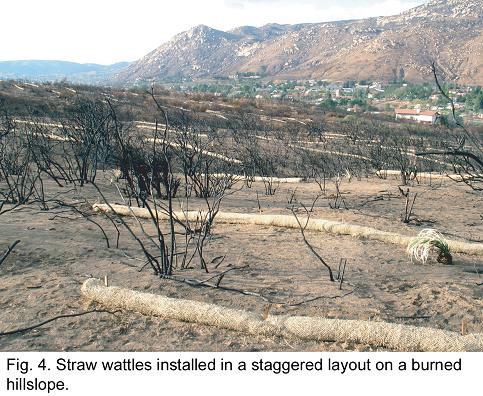Post-fire Treatment Effectiveness for Hillslope Stabilization
| Moscow FSL Home Page | |
| Personnel | |
| Engineering Publications | |
| BAER Tools | |
| Rocky Mountain Research Station | ||
| Forest Service Research | ||
|
|
||
|
Moscow Forestry Sciences Laboratory 1221 South Main Street Moscow, ID 83843 (208) 882-3557 7:30-4:30 M-F |
|
|
|
|
EROSION BARRIER TREATMENTS
Erosion barriers, made from natural and engineered materials, have been used for decades to mitigate post-wildfire runoff and erosion. These structures are designed to slow runoff, cause localized ponding, and store eroded sediment. Common post-wildfire hillslope erosion barriers include contour-felled logs (LEBs) (fig. 1);
straw wattles (10 in [0.25 m] diameter, 13 to 20 ft [4 to 6 m] long nylon mesh tubes filled with straw) (fig. 2);

contour trenches (hand or machine dug trenches), and straw bales (blocks of straw bound with twine) (fig. 3).

To eliminate long uninterrupted flow paths, erosion barriers are generally installed in staggered tiers with the center of each erosion barrier directly downslope from the gap between the two erosion barriers above it (fig. 4).

|
The information on this web page has been excerpted from the following publication: Robichaud, Peter R.; Ashmun, Louise E.; Sims, Bruce D. 2010. Post-fire treatment effectiveness for hillslope stabilization. Gen Tech. Rep. RMRS-GTR-240. Fort Collins, CO: U.S. Department of Agriculture, Forest Service, Rocky Mountain Research Station. 62 p. |
USDA Forest Service - RMRS - Moscow Forestry Sciences
Laboratory
Last Modified: